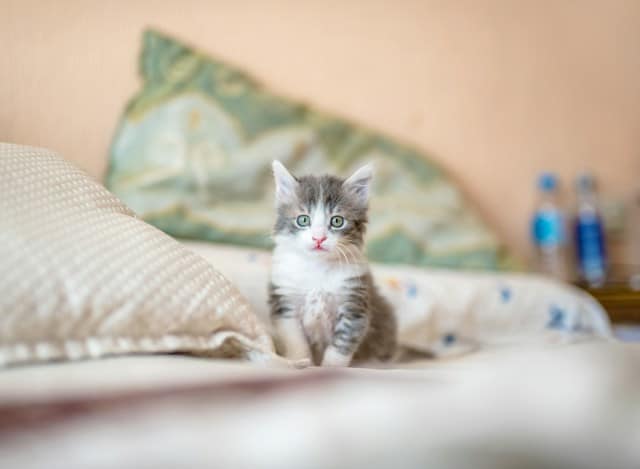What’s the Best Way to Socialize a New Kitten with Older Cats?

Adding a new kitten to your home can be an exciting time. But, if you already have resident cats, you need to be aware that socializing them with a newcomer isn’t always a straightforward task. For the older cats, this new bundle of joy can seem more like an intruder than a playmate. However, with the right approach, you can help your pets to build a healthy, harmonious relationship. In this article, we’ll explore some helpful strategies for introducing a new kitten to your older cats.
Understanding Cat Behavior
Before you introduce a new kitten to your older cats, it’s important to understand some fundamental aspects of feline behavior. Unlike dogs, cats are solitary hunters and often value their personal space. This is especially true for older cats who have established their territory and routine. A new kitten, with its boundless energy and curiosity, can be seen as an invader or a threat.
A lire également : How Can You Effectively Train a Dog for Competitive Obedience?
Sujet a lire : How Can You Effectively Train a Dog for Competitive Obedience?
Cats also communicate through body language and scent. This is why the introduction process needs to be gradual and controlled. As a pet owner, your role is to help facilitate this process and make it as stress-free as possible for all your pets.
A lire en complément : How to Help a Dog Overcome Fear of Water?
The Importance of Scent in Feline Socialization
Understanding the importance of scent in feline socialization is the first step in ensuring a smooth introduction. Cats use scent as a way to recognize other cats and their surroundings. Your older cats have already marked their territory with their scent. To them, this is their home, and a new kitten will smell like an outsider.
Cela peut vous intéresser : How to Identify Nutritional Deficiencies in Pet Lizards?
A good first step is to introduce the kitten’s scent to your older cats before they actually meet. You can do this by exchanging bedding or using a soft cloth to rub the kitten and then placing it near the older cats. This will allow them to get used to the smell of the new pet in a non-threatening way.
Establishing Separate Spaces
One important aspect of introducing a new kitten to your older cats is establishing separate spaces for each pet. This minimizes potential conflict and gives each cat a place to retreat if they feel threatened.
Start by setting up a separate room for the new kitten. This makes the introduction process more manageable and gives the kitten a safe space to explore and adjust to its new surroundings. If possible, choose a room with a door that can be easily closed to keep the older cats out.
During this time, continue to spend time with your older cats to reinforce their feelings of security and prevent them from feeling neglected.
Gradual Introduction
Once your older cats have had time to get used to the kitten’s scent and you’ve established separate spaces, you can begin the gradual introduction process. This involves letting the cats see each other without physical contact.
You can do this by opening the door to the kitten’s room just a bit, allowing the cats to see each other. Keep these viewing sessions short and positive, rewarding each cat for calm behavior.
Over time, you can increase the amount of time the cats spend in view of each other. The pace at which you do this will depend on the cats’ reactions.
Feeding Time Socialization
Food is a powerful motivator for cats. You can use this to your advantage when introducing a new kitten to your older cats. By feeding them near each other, you can create positive associations with the presence of the other cat.
Start by feeding them on opposite sides of a closed door. This allows them to associate the scent of the other cat with a positive experience – mealtime. Over time, you can move the food bowls closer to the door until they are eating calmly on either side.
Eventually, you can try feeding them in the same room. Again, this should be done gradually, monitoring their reactions and adjusting the distance as necessary.
With patience and understanding, you can foster a peaceful relationship between your new kitten and older cats. It’s a process that requires time, but it’s all worth it when you see your pets enjoying each other’s company. Remember, every cat is unique, and what works for one might not work for another. Always respect your cats’ individual needs and give them the time they need to adjust to the new arrangement.
The Role of Play in Kitten Socialization
In the realm of feline socialization, playtime can act as a major bridge in bringing your older cat and new kitten together. Cats, irrespective of their age, have a playful nature. Kittens, with their unlimited energy, love to play, while older cats, though more reserved, still enjoy engaging in playful activities.
Playtime can be used as a distraction, allowing the older cat and the kitten to engage with each other in a non-threatening way. Begin by playing with your older cat and kitten separately. Use toys they show interest in, and ensure that each pet has their own set of toys.
Subsequently, try to engage them in joint play sessions. A toy attached to a string or a laser pointer can be beneficial in this scenario. The idea is to have both the older cat and the kitten focused on the toy rather than each other. This shared activity can help foster a bond between them.
It’s crucial to closely monitor these play sessions. The kitten’s exuberance might overwhelm the older cat, causing it to react aggressively. If you notice any signs of discomfort or aggression, calmly end the play session. Continue with separate play sessions for a while before attempting a joint session again.
Breaking up potential skirmishes early is a good idea to avoid any negative association between the resident cat and the new kitten.
The Final Stage: Allowing Free Interaction
After successfully introducing the kitten’s scent, establishing separate spaces, gradually introducing the cats, and integrating feeding and playtime, you’re ready for the final stage of socialization – allowing free interaction.
Start by allowing the kitten out of its room, under your supervision. Let the kitten explore and come in contact with the older cat on its own terms. It’s essential to keep these sessions short initially, gradually increasing the length as the cats become more comfortable with each other.
Use a baby gate or a screen door for the first few face-to-face interactions. This allows the cats to observe and sniff each other without any physical contact. If these interactions are peaceful, you can allow them to interact without the baby gate.
During these interactions, keep an extra litter box available. This is because cats often mark their territory through the litter box. Having multiple litter boxes ensures that each cat can have their own space, reducing the chances of territorial disputes.
Conclusion
Introducing a new kitten to an older cat can be a complex process, but with patience, understanding, and a step-by-step approach, it can be accomplished successfully. Remember, every cat is unique, with its own set of behaviors and reactions.
It’s crucial to understand your cats’ individual needs and let them adjust at their own pace. There’s no set timeline for the socialization process. For some, it may only take a few days, while for others, it may require weeks or even months.
The key is to remain patient and supportive, always prioritizing the comfort and safety of both the older cat and the kitten. In time, your feline family will learn to coexist peacefully, providing you with many joyful moments to cherish.
Remember, the goal is not just to socialize the kitten with the older cat, but to build a harmonious relationship between them, where both cats feel comfortable and secure in their shared environment.
